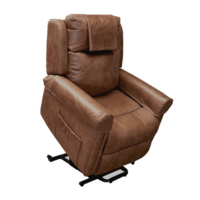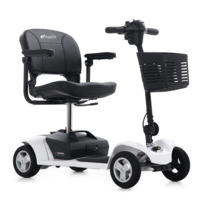What Is a Stroke? Why It’s Vital to Understand the Signs
In Australia, someone has a stroke every ten minutes. Stroke is the third leading cause of death in this country. And it’s the leading cause of disability, with over 475,000 Australians of all ages living with the effects of stroke.
Having a stroke can be a distressing experience. While stroke treatments have improved, for those who survive it can have a life-altering effect.
A stroke happens when the flow of blood to the brain is affected by a blocked or burst artery. Without enough oxygen and nutrients, the brain cells begin to die. The effect can be almost immediate – left untreated a stroke can attack up to 1.9 million brain cells per minute.
Because the part of the brain affected can no longer send messages to the body, stroke often results in a loss of movement, as well as memory loss and mental impairment.
While the symptoms and effects of a stroke can vary depending on the area of the brain affected and the severity, every stroke is a medical emergency. If left untreated, even a small stroke can be a precursor to a more serious stroke later on.
What happens after a stroke?

A stroke can be a scary and overwhelming experience not only for the patient but also for their family and loved ones. No two strokes are the same, which means the effects can range from mild to severe.
For people who have experienced a stroke, the road to recovery can be long. Stroke sufferers often see a decline in their overall health following a stroke. But staying active is an essential part of stroke recovery. According to research by the American Heart Association/American Stroke Association (AHA/ASA), inactivity can increase the chances of someone having another stroke.
Stroke recovery equipment can help stroke patients stay active while making sure they don’t overexert themselves. The range of stroke recovery aids can include hand trainers, exercise pedals, mobility scooters, self-dressing aids, leg lifters and adaptive home tools.
Stroke recovery may also involve in-home care and physical rehabilitation. Even something as simple as playing games can help stroke sufferers regain mental and physical activity.
What can prevent a stroke?
There are a number of risk factors for a stroke, including older age, a family history of stroke and already having had a stroke.
However, the National Stroke Foundation says that more than 80% of stroke can be prevented through lifestyle changes.
High blood pressure is the top risk factor for stroke and once identified is easily treatable. High cholesterol and Type 2 diabetes are also leading factors in stroke. But a simple health check can reveal whether someone is at risk of having a stroke and these can be managed with the help of a doctor.
After getting a health check, one of the simplest ways to prevent stroke is to lead a healthy lifestyle. Eating a balanced diet rich in vegetables, fruit, grains and lean meats and cutting down on fatty foods, sugar and alcohol, exercising regularly and quitting smoking can reduce your chances of experiencing a stroke.
Think F.A.S.T when a stroke happens
The Stroke Foundation uses the F.A.S.T. test as an easy way to identify if someone is having a stroke. This involves looking out for these signs:
Face – has their mouth drooped on one side?
Arms – are they able to lift both arms?
Speech – is their speech slurred or confused?
Time – if you notice any of these signs, call 000 immediately
Find out more about National Stroke Week and how you can take part at the Stroke Foundation.
Explore the range of stroke recovery equipment available online from Mobility HQ.





























